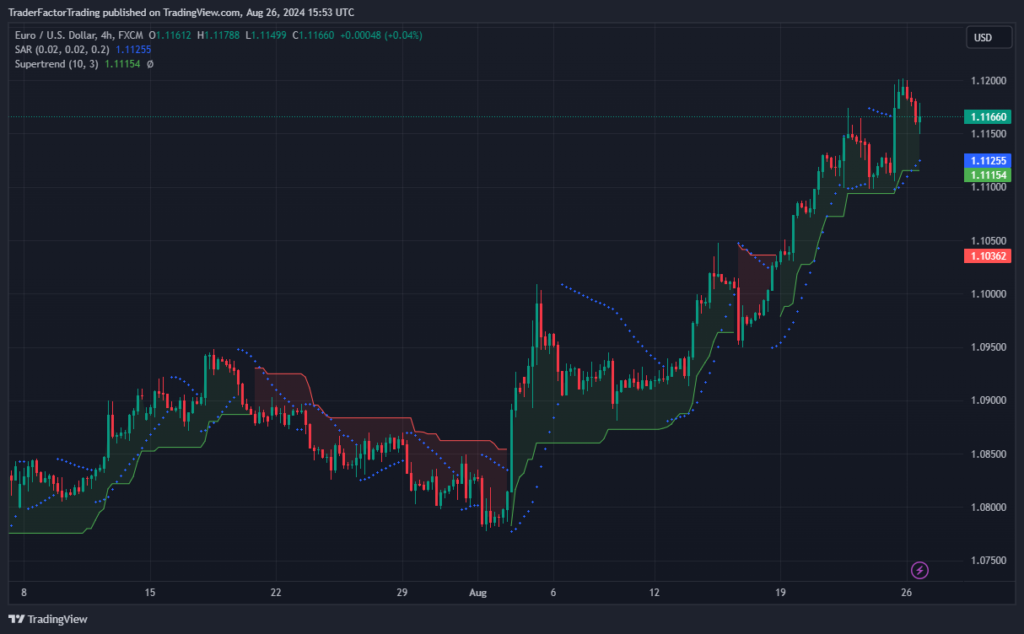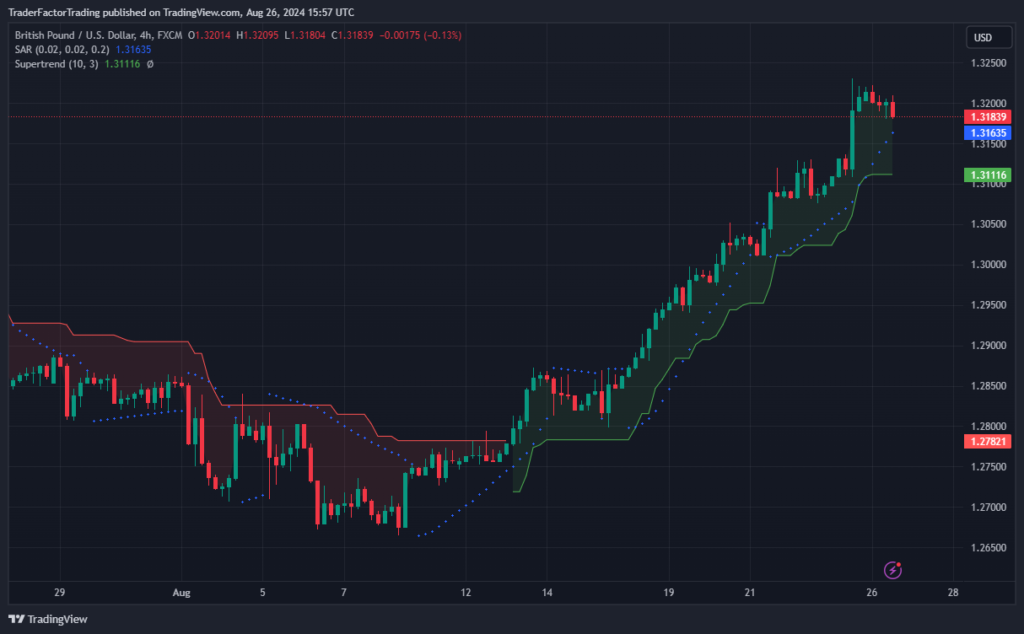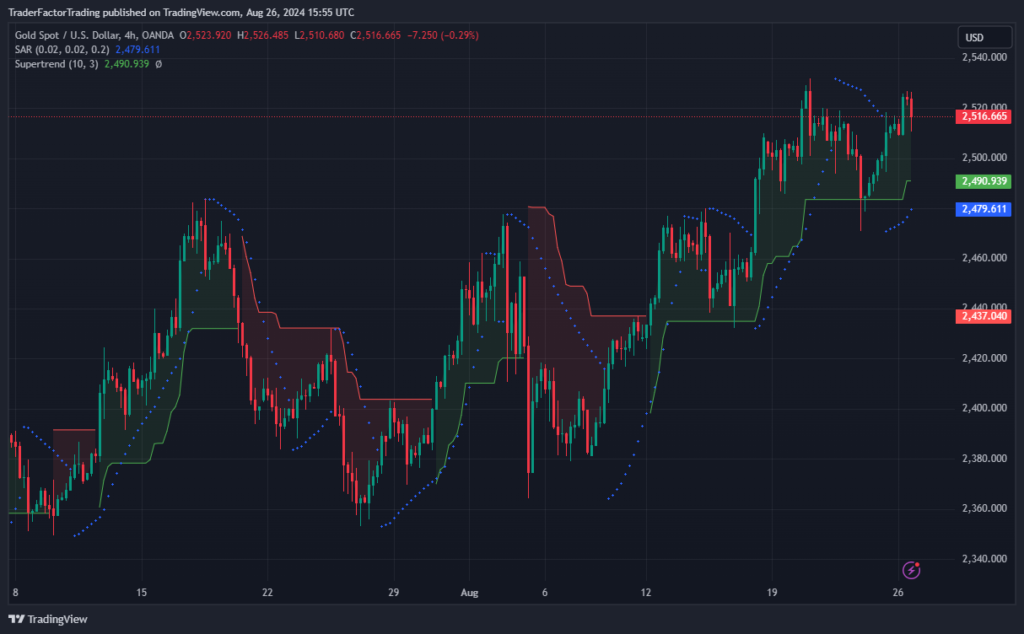The upcoming week in financial markets is set to be eventful, with a range of key economic indicators poised to shape investor sentiment. Central to this week’s outlook is the release of the Personal Consumption Expenditures (PCE) Price Index, a pivotal measure of inflation closely monitored by the Federal Reserve. As markets brace for potential shifts in monetary policy, other significant reports, such as the German Ifo Business Climate and US Durable Goods Orders, will also play crucial roles in influencing currency valuations and economic forecasts.
EURUSD 4-hour Chart

Follow the Live Markets Charts for real-time updates
Table of Contents
ToggleTrading Week: German Ifo Report Signals Economic Headwinds
The trading week commenced with the release of the German Ifo Business Climate report, which revealed a slight drop in sentiment among German companies. The business-climate index, provided by the Ifo Institute, decreased to 86.6 in August from 87.0 in July. This indicator is crucial as it reflects the economic health of Germany, Europe’s largest economy. A decline in the index often signals a potential slowdown in economic activity, which can subsequently impact the euro and currency pairs like EUR/USD. The persistent manufacturing slump in Germany continues to hinder economic recovery, causing fluctuations in currency valuations.
USA Durable Goods Orders Shows an Increase
In the United States, the Durable Goods Orders report showed a significant increase. New orders for manufactured durable goods surged to $289.6 billion in July, marking a 9.9% rise from the previous month. This metric is a key indicator of manufacturing activity and economic health, revealing consumer and business demand for high-value items. A robust increase in durable goods orders generally strengthens the US dollar, as it suggests economic growth and may influence Federal Reserve policy decisions. Following the release of this data, the EUR/USD pair remained below 1.1200, as the stronger-than-expected orders supported the USD, hindering a significant rebound.
Key Economic Events and Indicators
As the week progresses, several other economic reports and events are set to influence market dynamics:
- Tuesday: The CB Consumer Confidence report and Richmond Manufacturing Index in the US will be in focus, potentially affecting the dollar.
- Wednesday: Australia’s inflation report is anticipated, with implications for the AUD. Additionally, remarks from US FOMC Member Waller could hint at future rate cuts, while US Crude Oil Inventories will be monitored for impacts on the CAD due to Canada’s energy sector.
- Thursday: The release of German Prelim CPI and Spanish Flash CPI reports will likely influence the euro. In the US, data on the Prelim GDP Price Index, Prelim GDP, Pending Home Sales, and weekly Unemployment Claims will provide insights into the USD’s trajectory.
- Friday: Tokyo’s Core Inflation report could affect the JPY, mirroring ongoing trends in Japan’s inflation. Eurozone CPI Flash Estimates and Canada’s GDP data will also be pivotal.
PCE Price Index: Anticipation Builds for Market Impact
As Friday approaches, market participants eagerly anticipate the release of the Personal Consumption Expenditures (PCE) Price Index, a crucial indicator of inflationary trends in the U.S. economy. Current expectations suggest a slight uptick in the index, reflecting persistent inflationary pressures despite efforts to stabilize prices. This release is pivotal as it could shape investor sentiment, with markets potentially reacting sharply to any deviation from forecasts.
A higher-than-expected PCE could prompt concerns about prolonged inflation, potentially triggering a sell-off in bonds and weighing on equities due to anticipated interest rate hikes by the Federal Reserve. Conversely, a lower-than-expected figure might alleviate some inflation fears, buoying market confidence. In the broader economic context, this data is instrumental for policymakers as they navigate the delicate balance between curbing inflation and sustaining economic growth. The upcoming PCE release, therefore, stands as a key determinant in guiding future monetary policy and market dynamics.
Market Reactions and Trends
The start of the week saw the GBP/USD consolidating near 1.3200, restrained by positive Durable Goods Orders data from the US.
GBPUSD 4-hour Chart

Follow the Live Markets Charts for real-time updates
Gold prices retreated slightly from daily highs but maintained a position above $2,500, buoyed by geopolitical tensions and a weaker US dollar.
XAUUSD 4-hour Chart

Follow the Live Markets Charts for real-time updates
The US Dollar Index showed a slight uptick, reflecting the currency’s resilience in the wake of economic data releases. Meanwhile, Bitcoin continues to exhibit strength, bolstered by expectations of forthcoming US interest-rate cuts, as indicated by Federal Reserve Chairman Jerome Powell.
Overall, the release of the PCE Price Index later in the week remains a focal point for markets. As the Federal Reserve’s preferred measure of inflation, its outcome could significantly influence interest rate expectations and broader market sentiment.
Follow the Live Markets Charts for real-time updates.
Disclaimer:
All information has been prepared by TraderFactor or partners. The information does not contain a record of TraderFactor or partner’s prices or an offer of or solicitation for a transaction in any financial instrument. No representation or warranty is given as to the accuracy or completeness of this information. Any material provided does not have regard to the specific investment objective and financial situation of any person who may read it. Past performance is not a reliable indicator of future performance.

















